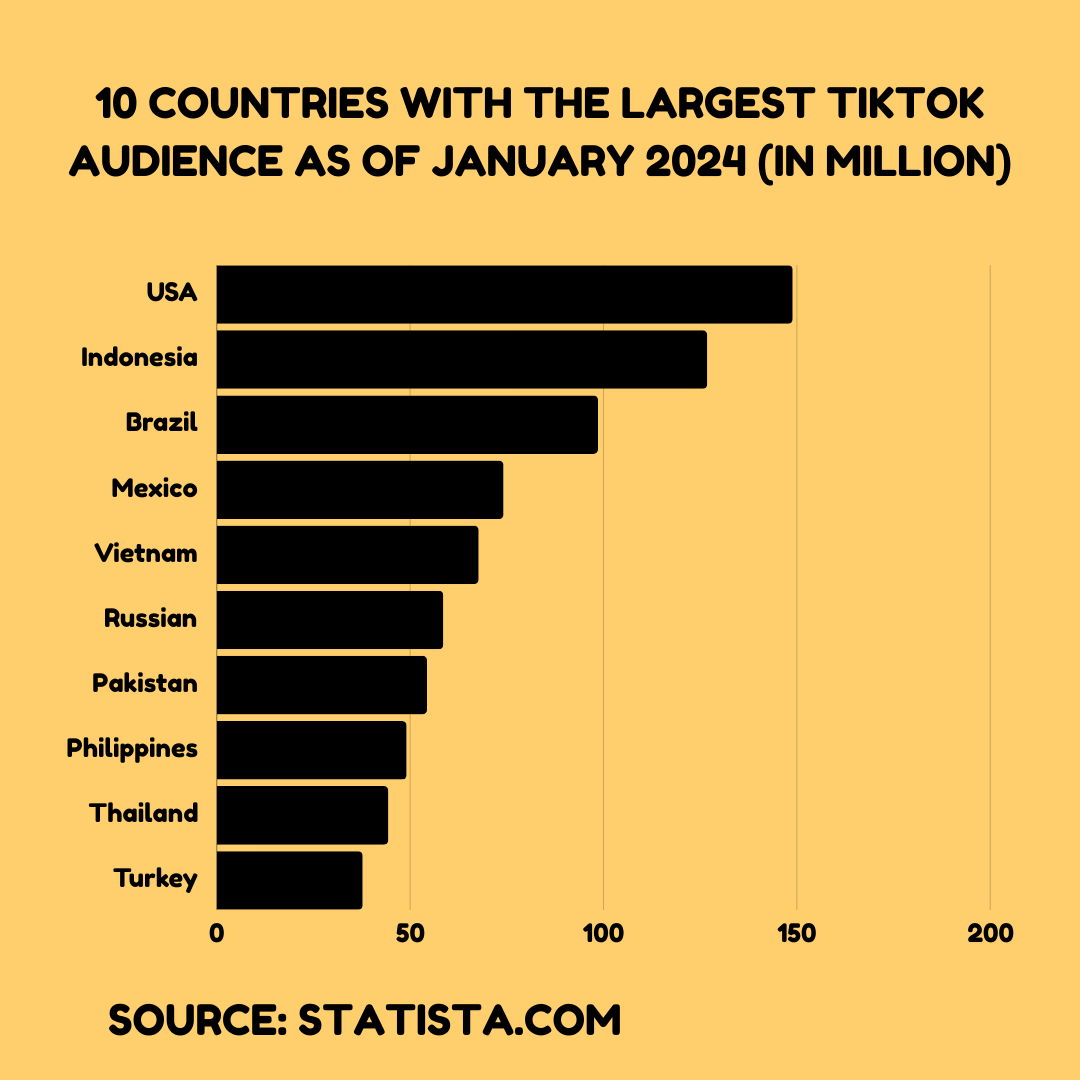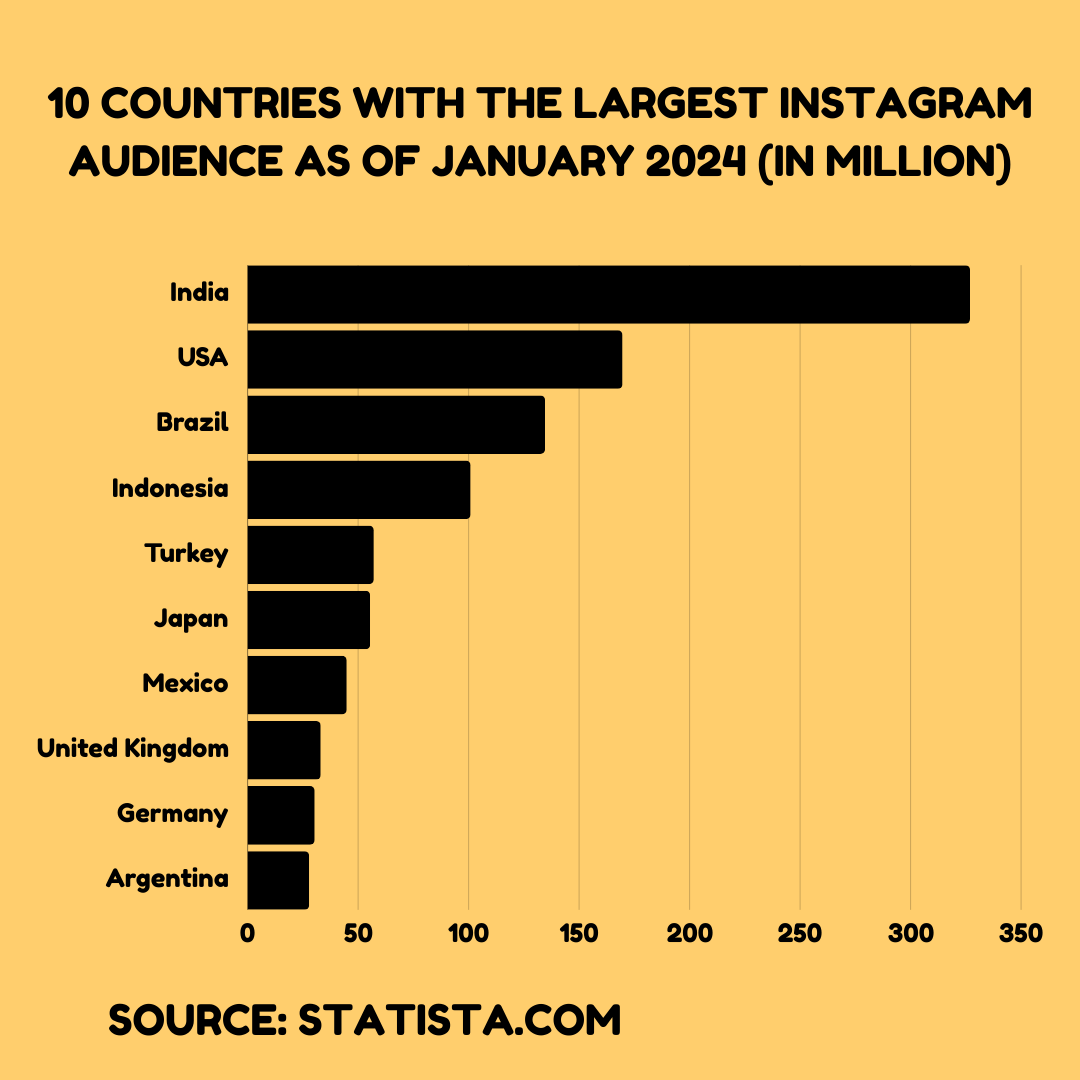Feeling burnt out on Facebook Ads that fizzle faster than a one-day sale?
Stuck in a rut with the same old marketing tricks on online marketplaces?
Hold onto your hats, because the real battleground for capturing customer attention has shifted, and it’s a fight between two social media giants: TikTok vs Instagram.
On one hand, you have the established king, Instagram, where influencers reign supreme with their flawless feeds and envy-inducing lifestyles.
But don’t underestimate the challenger!
Enter TikTok, the energetic newcomer brimming with short, captivating videos and infectious dance trends.
Both platforms boast millions of users and cutting-edge features, but which one is the secret weapon your online store needs to conquer the customer journey?
The truth is, there’s no single winner when it comes to comparing which one to use: TikTok vs Instagram for your online store!
The key lies in understanding who your ideal customers are and how they travel from curious scrollers to happy, paying customers.
Whether you’re selling phone cases on Etsy or handcrafted jewelry on Shopify, this guide will help you decode the demographics and customer journey on each platform, empowering you to strategically guide your customers towards that coveted “Add to Cart” click.
Do you struggle with managing multiple social media platforms for your brand's presence?
The Sociosight app can help you simplify the process and save you time. With Sociosight, you can publish, schedule, and monitor posts and engage with your followers across multiple social media platforms, all from one dashboard.
Get started today with a free sign-up!
Register Now for Free

Understanding Your Audience Demographics: Who Are You Talking To On TikTok vs Instagram?
In the thrilling fight for your online store’s customer base, the first punch you need to throw is understanding who your ideal customer is. This goes beyond just age and gender – it’s about diving into their online habits and shopping behaviors on both TikTok vs Instagram.
Here’s where demographics come in, acting as your roadmap to navigate the customer journey on each platform.
Table of Contents
Age & Spending Power Tiktok vs Instagram:
The age game is where things get interesting. TikTok is a haven for Gen Z, with a whopping 25% of users between 10-19 years old. These digital natives are comfortable with online shopping, often influenced by trends and peer recommendations. Their spending power might be lower, but their enthusiasm for discovery can’t be ignored.
Instagram, on the other hand, boasts a more balanced age range. While still popular with Gen Z (estimated 30.8% within the 18-34 age group), Millennials (25-34 years old) make up a significant chunk (30.3%) of the user base. This translates to a wider range of spending power, with Millennials typically having more disposable income compared to Gen Z.
Table: Age Breakdown of TikTok vs Instagram Users (US)
| Age Group | TikTok Users | Instagram Users |
| 10-19 years | 25% | 8% |
| 20-29 years | 22.4% | 30.8% (likely includes Gen Z – 18-24 years old) |
| 30-39 years | 21.7% | 30.3% |
| 40-49 years | 20.3% | 15.7% |
| 50+ years | 11% | 18.4% (combining 45-54 & 55+ years old) |
(Note: Instagram data combines 18-34 year olds due to a change in reporting)
Gender & Shopping Styles TikTok vs Instagram:
When it comes to gender, TikTok leans slightly female, with 57% of users identifying as such. These users often value authenticity and user-generated content (UGC), making them susceptible to recommendations from peers and relatable influencers. Their shopping style might be more impulsive, driven by trends and emotional connection with a product.
Instagram, on the other hand, has a near-even split (51.8% male, 48.2% female). Here, users are more likely to be swayed by visually appealing content and established influencers. Their shopping journey might involve more research, with product tags, detailed descriptions, and user reviews playing a crucial role in building trust and influencing purchase decisions.
Region & User Base TikTok vs Instagram:
Top Regions for TikTok Users:
According to Statista.com, 5 countries with the largest TikTok audience as of January 2024 (in million) are United States, Indonesia, Brazil, Mexico, and Vietnam.

Source Statista.com
Top Regions for Instagram Users:
According to Statista.com, 5 countries with the largest Instagram audience as of January 2024 (in million) are India, United States, Brazil, Indonesia, and Turkey.

Source Statista.com
Growth TikTok vs Instagram:
The landscape is shifting!
While TikTok enjoyed explosive growth in previous years, recent data suggests a slowdown in app downloads compared to Instagram.
According to Financial Times, Instagram’s total number of app downloads grew 20% in 2023 to a whopping 768 million, making it the most downloaded app globally.
In comparison, TikTok downloads only saw a modest 4% increase to 733 million during the same period.
Engagement TikTok vs Instagram:
However, there’s an interesting twist! While Instagram boasts a higher number of downloads, TikTok might still have an edge in terms of user engagement.
The same FT.com article highlights that users spend significantly more time on TikTok compared to Instagram.
On average, users devour 95 minutes of TikTok content in the fourth quarter of 2023, compared to just 62 minutes on Instagram. This indicates that TikTok users are more deeply engaged with the platform’s content.
Key Takeaways:
- Instagram currently sees a higher number of app downloads globally.
- TikTok may have an edge in terms of user engagement, with users spending more time on the platform.
- Based on current data, if you’re looking to tap into a massive user base in Asia, particularly Indonesia, both platforms offer strong potential.
Remember: Demographics are just the starting point. Understanding your target audience‘s shopping behaviors on each platform is key to crafting a winning customer journey strategy. We’ll delve deeper into that in the next section!
Decoding Shopping Behaviors: How Users Buy on TikTok vs Instagram
Now that you understand the demographics and who frequents each platform, let’s explore how shopping behaviors differ between TikTok vs Instagram.
Buckle up, because we’re about to dive into the impulsive world of TikTok shopping and the more considered approach on Instagram.
TikTok Vs Instagram: Impulse vs. Considered Purchases
- TikTok: Here, trends reign supreme. Users are bombarded with short, engaging videos featuring products, often accompanied by catchy music and challenges. This fast-paced environment is perfect for impulse purchases. Users see something cool, they want it, and they can often buy it within the app (thanks to TikTok Shopping integration) before the urge fades.
- Instagram: While Instagram has embraced short-form video content with Reels, the overall shopping experience feels more deliberate. Users might discover a product through a post or story, but they’re more likely to research reviews, compare prices, and visit the brand’s website before hitting “purchase.”
TikTok vs Instagram: Discovery vs. Research
- TikTok: The platform excels at product discovery. Its algorithm personalizes content feeds, exposing users to new and trending products they might not have known existed. Influencer marketing is also huge on TikTok, with relatable creators showcasing products in a fun and authentic way.
- Instagram: While discovery happens on Instagram, it often feels more targeted. Users might follow specific brands or influencers whose content aligns with their interests. The ability to save posts and revisit them later facilitates a more research-oriented shopping journey.
TikTok vs Instagram: Engagement vs. Consideration
- TikTok: Engagement is king (or queen) on TikTok. Videos with high engagement (likes, shares, comments) are more likely to go viral and reach a wider audience. This can translate to increased sales, especially for products with mass appeal.
- Instagram: User engagement on Instagram plays a role, but consideration also factors in. Features like product tags, detailed descriptions, and user reviews allow users to gather more information before committing to a purchase.
Key Takeaways:
- TikTok fosters impulsive purchases driven by trends and engaging content.
- Instagram caters to a more considered shopping journey with opportunities for research and brand exploration.
Optimizing Your Shopping Strategy on TikTok vs Instagram:
Understanding these behavioral differences empowers you to tailor your social commerce strategy for each platform. Here are some tips:
TikTok:
- Leverage short, engaging videos to showcase your products in a fun and trendy way.
- Partner with relevant influencers who resonate with your target audience.
- Make it easy to buy within the app through TikTok Shopping.
Instagram:
- Create high-quality photos and videos that showcase the aesthetics and functionality of your products.
- Utilize product tags and detailed descriptions to provide users with all the information they need.
- Encourage user-generated content (UGC) through contests and challenges to build brand trust and authenticity.
By understanding your target audience and their shopping behaviors on each platform, you can craft a winning social commerce strategy that converts viewers into loyal customers. Remember, experimentation is key! Don’t be afraid to test different approaches and analyze the results to see what resonates best with your audience on TikTok and Instagram.
Guiding the Customer Journey: Tailoring Content for TikTok vs Instagram (with Cross-Posting Considerations)
The battleground for your online store isn’t just about demographics and shopping behaviors – it’s about guiding your target audience through a distinct customer journey on each platform.
Here’s where understanding TikTok’s impulsive, trend-driven nature and Instagram’s more considered approach becomes crucial.
Let’s map out the customer journey for each platform, with content suggestions tailored to convert viewers into paying customers.
TikTok: The Land of Discovery and Instant Gratification
Imagine a fast-paced, dynamic mall filled with eye-catching displays and exciting challenges. That’s the essence of the TikTok customer journey. Here, trends are king, and users crave short bursts of entertainment with a sprinkle of “wow” factor.
Top of the Funnel (Awareness):
- Content: Spark brand awareness with short, engaging videos (15-60 seconds) that showcase your product in action. Leverage trending sounds, challenges, or humor to grab attention. Think catchy dances featuring your product or user-generated content (UGC) challenges that encourage people to try something new with your brand.
- Audience: This stage is perfect for reaching a broad audience, particularly Gen Z who are receptive to new trends and discover products through entertaining content.
Middle of the Funnel (Consideration):
- Content: Maintain the momentum with tutorials or “how-to” videos that demonstrate the benefits and functionalities of your product. Partner with micro-influencers who resonate with your target audience to showcase how they incorporate your product into their lives.
- Focus: While the focus is still on entertainment, subtly introduce the problem your product solves and how it enhances users’ lives.
Bottom of the Funnel (Conversion):
- Content: Make the purchase seamless with clear calls to action and easy access to buying options. Utilize TikTok Shopping integration to allow users to buy directly within the app. Highlight customer testimonials and reviews to build trust and encourage impulse purchases.
- Key: Since the TikTok audience is prone to impulsive decisions, prioritize clear CTAs and a frictionless buying experience.
Instagram: The Curated Window into a Lifestyle
Think of Instagram as a visually stunning boutique filled with aspirational products and brand stories. Users here are more deliberate, browsing through content and researching before making a purchase.
Top of the Funnel (Awareness):
- Content: Grab attention with high-quality photos and videos (both short-form and long-form Reels) that showcase the aesthetics and emotional connection users can have with your product. Partner with established influencers who embody your brand values to introduce your product to a relevant audience.
- Audience: This stage is ideal for targeting a more specific audience, leveraging Instagram’s powerful targeting options to reach users based on interests and demographics.
Middle of the Funnel (Consideration):
- Content: Deepen user engagement with detailed product descriptions, user-generated content (UGC) featuring user reviews, and stories highlighting behind-the-scenes glimpses of your brand. Utilize product tagging to allow users to research further and explore purchase options.
- Focus: Provide informative content that addresses user needs and pain points. Showcase the value proposition of your product and how it integrates seamlessly into their lifestyle.
Bottom of the Funnel (Conversion):
- Content: Offer limited-time promotions or exclusive discounts to incentivize purchases. Leverage Instagram’s shopping features like Shoppable Posts and Stories to streamline the buying process.
- Key: Build trust and social proof through user reviews and testimonials. Address any buying concerns with informative content and responsive customer service through direct messages.
The Verdict TikTok vs Instagram: Content Reigns Supreme (On Both Platforms!)
Despite both platforms offering a variety of content formats (photos, short-form videos, and even long-form content), the key takeaway is that high-quality, engaging content is what truly matters.
Here’s a quick cheat sheet to remember:
- For impulsive purchases and trend-driven discovery: Focus on short, engaging videos with a clear call to action on TikTok.
- For considered purchases and brand storytelling: Prioritize high-quality visuals, informative content, and building trust on Instagram.
Cross-Posting: To Share or Not to Share?
While the customer journey may differ slightly between platforms, there’s a question that lingers: can you simply create content for one platform and share it on the other? The answer isn’t a simple yes or no. Here’s a breakdown of the pros and cons:
Pros:
- Saves time and resources by reusing existing content.
- Maintains brand consistency across platforms.
- Can spark conversation and encourage users to follow you on both platforms.
Cons:
- Content might not resonate as well if not adapted for each platform’s format and user preferences.
- TikTok’s fast-paced, vertical video style might not translate well to Instagram’s static photos or slower-paced Reels.
- Conversely, high-quality Instagram photos might appear bland or lack the energy required to capture attention on TikTok.
- Missing platform-specific features like hashtags, challenges, or shopping integrations can hinder reach and engagement.
The Art of Tailoring vs. Reposting:
So, the best approach lies in a strategic mix of tailoring and cross-posting. Here’s how you can strike a balance:
- Repurpose the core concept: If you have a strong concept for a video, adapt it to each platform’s format. Shoot vertically with trending music for TikTok, and create a more polished vertical video with a catchy caption for Instagram Reels.
- Leverage platform-specific features: Add trending hashtags to your Instagram posts and TikTok captions to increase discoverability. Utilize TikTok’s duet and stitch features to encourage user-generated content, while incorporating product tags and shoppable links on Instagram.
- Focus on micro-content creation: Break down longer videos into bite-sized snippets for TikTok, while offering a more comprehensive behind-the-scenes look through Instagram Stories.
Remember: Your audience expects a native experience on each platform. By tailoring content to leverage the strengths of each platform, you create a more engaging and effective customer journey.
The Final Word: It’s All About Your Audience
Ultimately, the decision to cross-post or create unique content boils down to your target audience and the resources available.
If you have a well-defined audience with a presence on both platforms, consider tailoring content with platform-specific elements.
Here’s how you can approach each scenario:
- Tailored Content: If you have the resources and a clear understanding of your audience’s preferences on each platform, creating unique content for TikTok and Instagram is ideal. This allows you to fully leverage the strengths of each platform and tailor the message and format to resonate best with your audience.
- Cross-Posting Content: If resources are limited, strategically cross-posting content can still be effective. However, remember to adapt the content for each platform. Repurpose core concepts into platform-specific formats, leverage trending hashtags and features, and break down longer videos for TikTok.
Making Cross-Posting Work: Maintain a Native Experience
While cross-posting can save time, ensuring a native experience on each platform is crucial. A one-size-fits-all approach won’t cut it. Here’s how to bridge the gap:
- Repurpose, Don’t Replicate: Adapt the content to each platform’s format and user preferences. For instance, fast-paced vertical videos for TikTok might need a slower, more polished edit for Instagram Reels.
- Embrace Platform-Specific Features: Leverage hashtags, challenges, or shopping integrations to optimize your content for discoverability and engagement on each platform.
Social Media Management Tools: Streamlining Your Workflow
Despite the need for a content strategy that caters to different audiences on TikTok vs Instagram, managing your content creation and scheduling across platforms, especially when tailoring content or strategically cross-posting, can be time-consuming.
This is where social media management tools like Sociosight.Co come into play. These tools can be valuable assets for:
- Schedule posts across various platforms, saving you time and ensuring consistent content flow. This becomes particularly helpful when managing cross-posted content and ensuring it goes live at the optimal times for each platform’s audience.
- Track performance and analyze engagement metrics on both TikTok vs Instagram. This allows you to see how your tailored content or cross-posted content performs on each platform, helping you understand what resonates best with your audience.
By leveraging social media management tools, you can streamline your workflow, gain valuable insights, and make informed decisions about your content strategy, whether you choose tailored content or strategic cross-posting.
Remember: Your audience expects a native experience on each platform. By tailoring content to leverage the strengths of each platform, you create a more engaging and effective customer journey. Regardless of the approach you choose, prioritize understanding your audience and their platform preferences. This will guide you in creating content that resonates and converts viewers into loyal customers.
Bonus Tip: Stay Ahead of the Curve
The social media landscape is constantly evolving, and both TikTok vs Instagram are known for introducing new features and trends. Here’s how to stay ahead of the curve:
- Stay Updated: Follow industry publications and social media thought leaders to be aware of emerging trends and platform updates.
- Adapt Your Strategy: Don’t be afraid to experiment with new features and content formats. Analyze the performance of your content and adapt your strategy based on what resonates best with your audience.
- Utilize Social Media Management Tools: Tools like Sociosight.Co can help you monitor platform updates and identify trends. They can also track the performance of your content using the new features, allowing you to see what’s working and what’s not.
By staying informed and adaptable, you can ensure your social media strategy remains relevant and continues to drive results on both TikTok vs Instagram.











